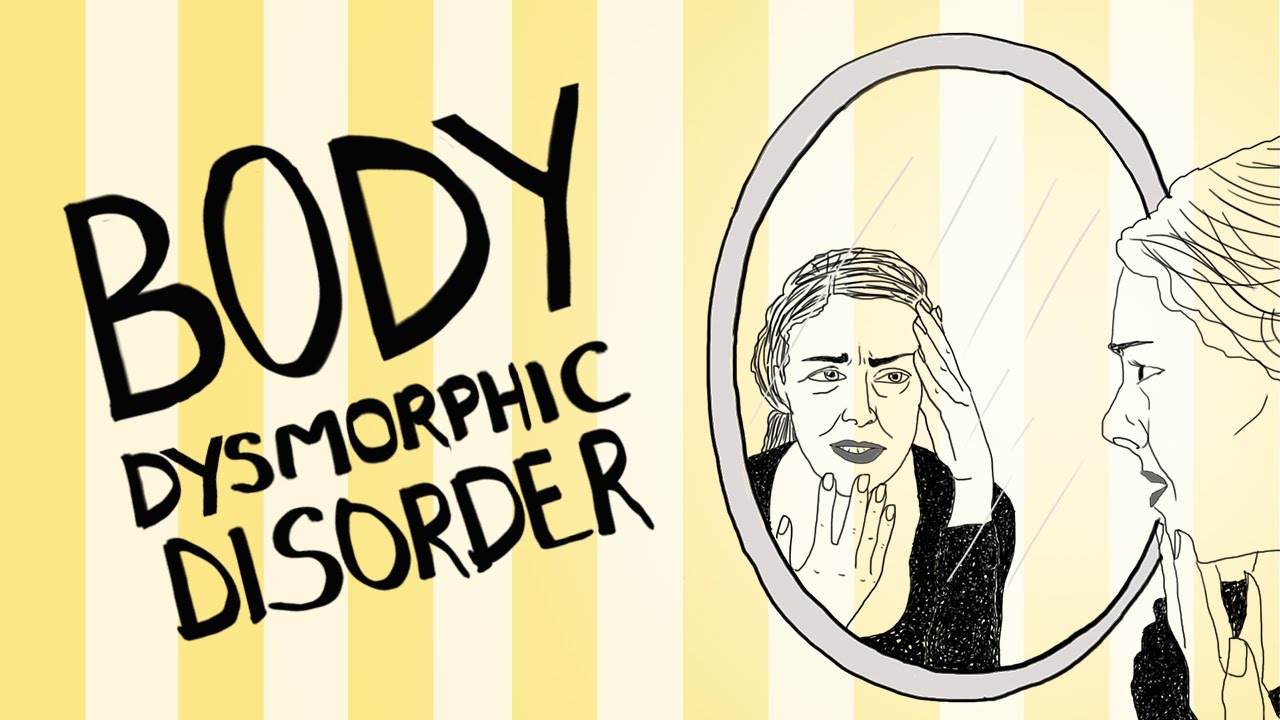
Body Dysmorphic Disorder (BDD)
Person is concerned and preoccupied with perceived defect in physical appearance which are not observable to others.
Person performs repetitive behaviour (mirror checking, excessive grooming, skin scratching) or mental acts (comparing his or her appearance with that of others) in response to the appearance concerns.
The preoccupation causes clinically significant distress or impairment in social, occupational or family functioning.
Examples of body dysmorphic disorder:
Muscle dysmorphia: Person is preoccupied with the idea that his /her body build is too small or insufficient.
Bad shape/ size of nose
Bad shape/ size of breasts
Not good looking face
Wrinkles or acne scars
Genitalia: Small size (length or girth) of penis
Hairs: color, density
Bad looking lips
Body dysmorphic disorder is a mental health problem in which person thinks about perceived defects or flaws in body appearance. The physical flaw that appears minor or can’t be seen by others. But person may feel so embarrassed, ashamed and anxious that person may avoid social situations.
When patient has body dysmorphic disorder, he /she intensely focuses on own appearance and body image, repeatedly checking the mirror, grooming or seeking reassurance, sometimes for many hours each day. Patient’s perceived defect and the repetitive behaviors cause significant distress, and impact negatively ability to function in daily life.
Person may seek out surgical cosmetic procedures to “fix” perceived defects. After surgery person may feel temporary satisfaction or a reduction in distress after visiting a doctor, but after sometime the anxiety returns and patient starts searching for other ways to correct perceived defect in body.
Signs and symptoms of body dysmorphic disorder:
Remains preoccupied with a perceived defect in appearance that to others can’t be seen or appears minor
Strong belief that you have a defect in his/ her appearance that makes you ugly or deformed
Belief that others take special notice of defect in body appearance in a negative way or mock you
Engaging in behaviors aimed at correcting or hiding the perceived defect. It’s difficult to resist or control, such as frequently checking the mirror, grooming or skin picking.
Attempting to hide perceived defect with makeup or clothes hand
Patient compares appearance with others
Frequently seeking reassurance about your appearance from others
Patient try to become perfectionist in body looks.
Seeking cosmetic procedures with little satisfaction. Sometimes patient undergoes multiple surgical operations to correct perceived defect in body.
Patient avoids social situations due low confidence regarding physical appearance of oneself.
Preoccupation with appearance and excessive thoughts about perceived defects and repetitive behaviour to correct the perceived defect can be unwanted. This makes a person more restless. Patient finds it difficult to control the thoughts. For patient the body dysmorphic disorder becomes time and energy-consuming. Body dysmorphic disorder creates heavy mental distress, sometimes body dysmorphic disorder hampers social life, family life, job and work, education or other areas of functioning.
The perceived defect in body may change / shift over time. The most common features people tend to fixate about include:
- Face, such as nose, lips, complexion, wrinkles, acne etc.
- Hair, such as appearance, thinning and baldness
- Skin and vein appearance
- Breast size
- Muscle size and tone
- Genitalia
Muscle dysmorphia: preoccupation with body build being too small or not muscular enough occurs in males.
Insight about body dysmorphic disorder varies. Patient may recognize that beliefs about perceived defect is unnecessary/ excessive or not be true, or think that they probably are true. Sometimes patient may be absolutely convinced that they’re true. The more conviction of beliefs, the more distress and disruption may experience in your life.
Causes of Body dysmorphic disorder:
It’s not known specifically what causes body dysmorphic disorder.
Risk factors for body dysmorphic disorder:
- Body dysmorphic disorder commonly starts in the teenage years and it affects both males and females.
- Certain factors seem to increase the risk of developing or triggering body dysmorphic disorder, including:
- Family history of body dysmorphic disorder or obsessive-compulsive disorder, or anxiety disorder
- Negative life experiences, such as childhood teasing, neglect or abuse
- Personality traits, such as perfectionism
- Societal pressure or expectations of beauty
- Having another mental health condition, such as anxiety or depression
Complications of body dysmorphic disorder:
- Person may undergo depression
- Suicidal thoughts or behavior
- Anxiety disorders
- Obsessive-compulsive disorder
- Eating disorders
- Substance misuse alcohol, cannabis etc
- Health problems from behaviors e.g. skin picking
- Physical pain or risk of disfigurement due to repeated surgical interventions
Treatment of body dysmorphic disorder:
- Medication
- Cognitive behavioral therapy CBT

